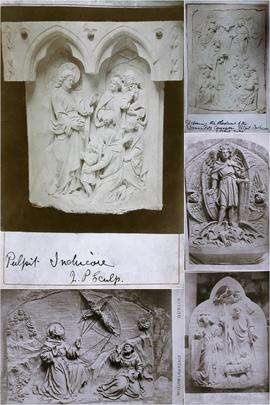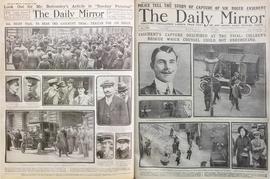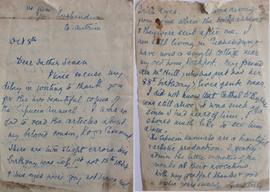Irish History / Bound Photographic Volume
- IE CA CP/3/16/6
- Unidad documental compuesta
- c.1890-1945
Parte deIrish Capuchin Archives
A large bound volume containing photographic prints mainly of individuals and events associated with the Irish Revolution. The images were probably compiled for publication in ‘The Capuchin Annual’. The volume is not paginated. The volume includes the following image content:
• A Home Rule demonstration on Sackville (O’Connell) Street in Dublin.
• Photographs of the 1916 Rising leaders including Tom Clarke, Patrick Pearse, William Pearse, Thomas MacDonagh, Éamon de Valera, and Con Colbert.
• Prints of John Redmond, Michael Collins, Cathal Brugha, Eoin MacNeill, Constance Markievicz, Terence MacSwiney, Erskine Childers, Kevin O’Higgins, Fr. Dominic O’Connor OFM Cap., Margaret Pearse, Arthur Griffith, Kevin Barry, Thomas Whelan, Eoin O’Duffy, Seán T. O’Kelly, Dan Breen, Thomas Kelly, Douglas Hyde, Fr. Paschal Robinson OFM, William Gibson, 2nd Baron Ashbourne, Delia Murphy Kiernan, Archbishop William Walsh, James Ryan, William T. Cosgrave, and Timothy Healy.
• Photographs of Royal Irish Constabulary Auxiliaries.
• Images of the Dublin Metropolitan Police.
• Press photographs showing events during the War of Independence.
• Images of Fianna Éireann groups.
• A photograph of the interior of the General Post Office from ‘The Irish Builder’ (25 March 1916).
• Images of the aftermath of the 1916 Rising in Dublin.
• A postcard reproduction of a portrait of Constance Markievicz by the Polish artist Bolesław Szańkowski (1901).
• Images of the destruction in Dublin at the outset of the Civil War.
• Several republican funerals.
• An image of Avondale House in County Wicklow.
• Released republican prisoners (1917).
• Postcard images of the burning of Cork during the War of Independence (1920).
• Images of National (Free State) Army soldiers during the Civil War.
• An image of army veterans at the Royal Hospital Kilmainham in Dublin (c.1890).
• Photographs of the Eucharistic Congress in Dublin (1932).



